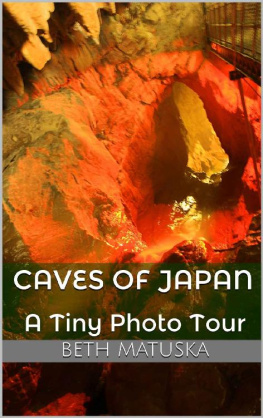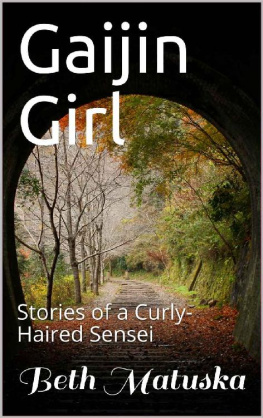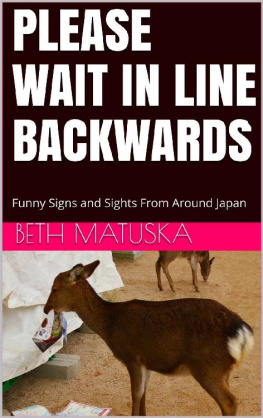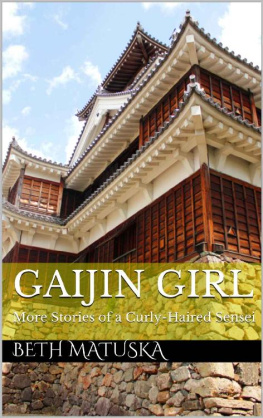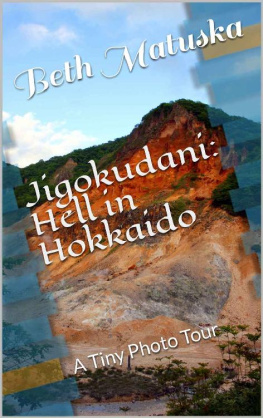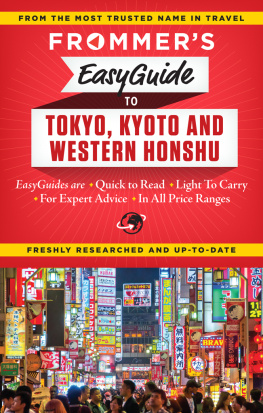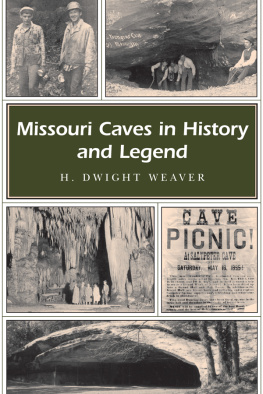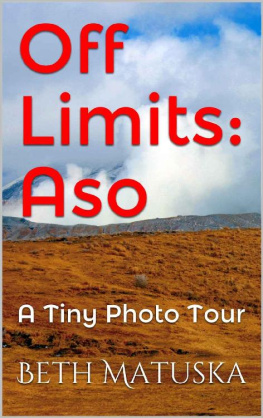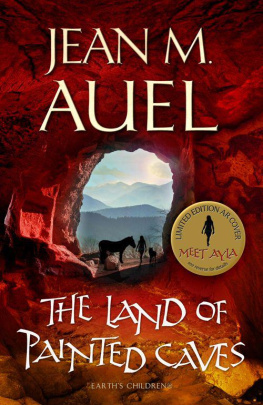Beth Matuska - Caves of Japan
Here you can read online Beth Matuska - Caves of Japan full text of the book (entire story) in english for free. Download pdf and epub, get meaning, cover and reviews about this ebook. year: 0, genre: Art. Description of the work, (preface) as well as reviews are available. Best literature library LitArk.com created for fans of good reading and offers a wide selection of genres:
Romance novel
Science fiction
Adventure
Detective
Science
History
Home and family
Prose
Art
Politics
Computer
Non-fiction
Religion
Business
Children
Humor
Choose a favorite category and find really read worthwhile books. Enjoy immersion in the world of imagination, feel the emotions of the characters or learn something new for yourself, make an fascinating discovery.
- Book:Caves of Japan
- Author:
- Genre:
- Year:0
- Rating:4 / 5
- Favourites:Add to favourites
- Your mark:
- 80
- 1
- 2
- 3
- 4
- 5
Caves of Japan: summary, description and annotation
We offer to read an annotation, description, summary or preface (depends on what the author of the book "Caves of Japan" wrote himself). If you haven't found the necessary information about the book — write in the comments, we will try to find it.
Caves of Japan — read online for free the complete book (whole text) full work
Below is the text of the book, divided by pages. System saving the place of the last page read, allows you to conveniently read the book "Caves of Japan" online for free, without having to search again every time where you left off. Put a bookmark, and you can go to the page where you finished reading at any time.
Font size:
Interval:
Bookmark:
Caves of Japan: A Tiny Photo Tour
Beth Matuska
2018 Beth Matuska
All Rights Reserved. No part of this publication may be reproduced, distributed, or transmitted in any form or by any means, including photocopying, recording, or other electronic or mechanical methods, without the prior written permission of the publisher, except in the case of brief quotations embodied in critical reviews and certain other noncommercial uses permitted by copyright law.
Thank you to everyone who has supported my literary endeavors! I really appreciate everyone who has taken the time to read and review.
Foreword
When you think of Japan, what do you think of? Chances are, it falls somewhere in the realms of big cities, black-suited businessmen, and geisha, brightly-colored like a bird, drawing the eye. You might think temples, shrines, and masses of people. Caves aren't exactly something that you might think of immediately. The thing about Japan is, despite being relatively small, it is packed with geological features that you might not expect. Caves, while not as well-known to outsiders, are abundant throughout the country.
Always mysterious and alluring, caves have always had an air of mystery and power. There is something oddly intriguing about a deep, dark hole into the earth. I wanted to see a part of nature that I never had back home. While my home in the U.S. had a lot of mountains, there was none of the limestone that is generally necessary to produce a cave system.
Of course, most caves in Japan that are easily accessible by foreigners are limited unless you either rent a car or get a local to take you there. Otherwise, you will be limited to those places easily reached through public transportation- mainly bus and train. That does mean that most of the caves you see will not be wild and untamed, but managed and relatively safe. A family-friendly adventure, I you will.
Despite the less-than-wild nature of the caves, I found them to be great places to explore the more unusual side of nature in Japan. A lot of effort had been made to preserve the unique features of each cave, leaving a unique look at the natural beauty to be found. More intriguingly, a few caves have traces of ancient habitation, from ancient fire pits to clay pots half-grown into the cave wall.
I hope you enjoy this look into the beauty of these unique places. I visited three caves in total, but there are many more out there to explore. If you get the chance, you should take the time to see them for yourself.
Akiyoshido and Akiyoshidai
On the western side of Honshu, in Yamaguchi Prefecture, lies Akiyoshido and Akiyoshidai. Akiyoshido is a beautiful cave system extending for around nine kilometers, of which slightly more than one kilometer is open to the public. The caves spread out under the limestone plains of Akiyoshidai, which is designated as a quasi-national park. A beautiful region, the cave and the surrounding area get many visitors throughout the year, though the numbers die down in the winter months. Access is by bus, which runs regularly from the city of Yamaguchi as well as other surrounding towns.
The cave, and to a lesser extent, the plain, is a major part of the local industry. As with most well-known nature tourism areas, shops abound to try and sell you a bit of the natural wonder. Limestone rocks can be purchased at any number of shops lining the road to the cave. Most provide the typical simple stone carvings and figures, as well as the standard postcards. Half a dozen shops sell ice cream in a variety of specialty flavors, and are well-worth the stop. Sit down restaurants are, however, the usual tourist trap prices.
When you get to the cave entrance, expect to have finished your snack. No food is allowed in the cave to protect it from damage. Bottled drinks should be put in your bag or backpack, as you don't want water from the cave to drip on it. It is likely contaminated from the bats living in the ceiling. Entrance fees are 1200 yen per person, a bit steep in comparison to other caves, but worth it.
When you go through the gate, you still have a short walk to get to the cave itself. Follow a small path through the forest along a rushing stream and you will see the covered bridge leading into the cave itself. Though man-made, it fits in perfectly with the natural setting, crossing over the rushing water and proceeding into darkness.


The turquoise water flows out from the cave, coming from deep within. As you cross over the bridge, the sound gets louder as the light grows dim. The river itself flows deep within the cave, carving out huge caverns in the darkness. As you look back on the entrance, the light reflects off the water.

Moving slightly further into the cave, you are treated to the sight of the wide river filling the cavern, illuminated by strategically-placed lights. The walkway curves around the edge of the water, with a low barrier to prevent accidents. From here, the light is just bright enough to navigate by, but dim enough to make photography difficult without a flash. Tripods are generally not allowed as that could create a hazard. The posts of the barrier do make a decent substitute, however, and allow for much better clarity with the lower light.

Not far into the cave, the path divides off into the main route and the adventure course, a somewhat more difficult course leading into the upper areas of the first large cavern. Climbable by those of even moderate fitness, it does require the basic ability to climb a narrow, steep ladder and navigate through a few narrow areas. A low barrier prevents you from falling, but doesn't guarantee safety. The 300-yen extra fee for accessing this course includes the loan of a flashlight with a strap, so that you can safely navigate your way in the largely unlit area. The elevated view of the cave is worth the price.

In addition to the view of the entrance, the adventure trail brings you closer to rock formations that you wouldn't appreciate as much if only seen from below. While many bypass the adventure trail due to the cost or the height, this simply means that you have more time to look around without interruption. The bare minimum of light is provided to ensure safety, and a few of the rock formations have been cut to clear the path.

The path looks out over the river below, the downward angle revealing more rock formations higher above. Please note: this is NOT the place for a selfie. The barrier is no more than a waist-high series of posts connected with a loose chain.

Don't get too caught up in looking at the beauty down below that you forget about the sights around you. The ceiling of the cave is where all the life is, and there is a LOT of life. Insects with really long legs, looking like a distant cousin to the centipede crawl around, and bats hang tightly curled from the ceiling. Asleep during the day, these won't harm you unless you accidentally hurt them.
Next pageFont size:
Interval:
Bookmark:
Similar books «Caves of Japan»
Look at similar books to Caves of Japan. We have selected literature similar in name and meaning in the hope of providing readers with more options to find new, interesting, not yet read works.
Discussion, reviews of the book Caves of Japan and just readers' own opinions. Leave your comments, write what you think about the work, its meaning or the main characters. Specify what exactly you liked and what you didn't like, and why you think so.

